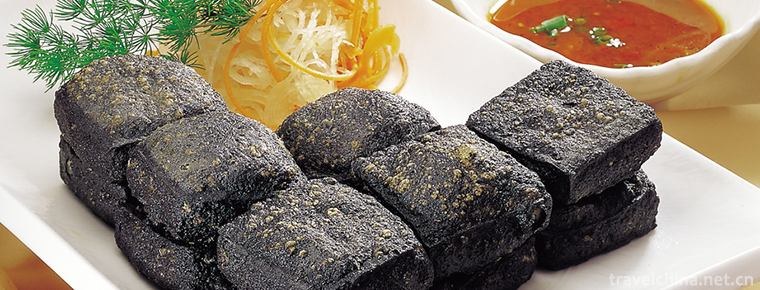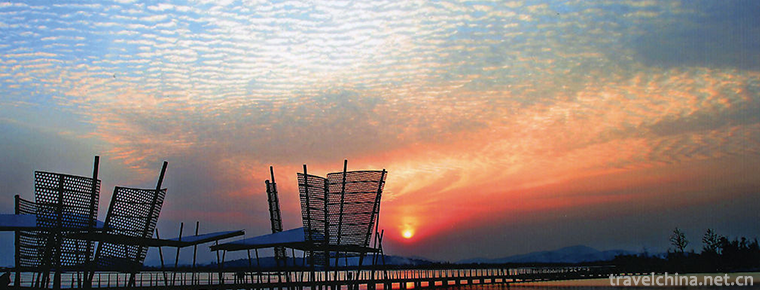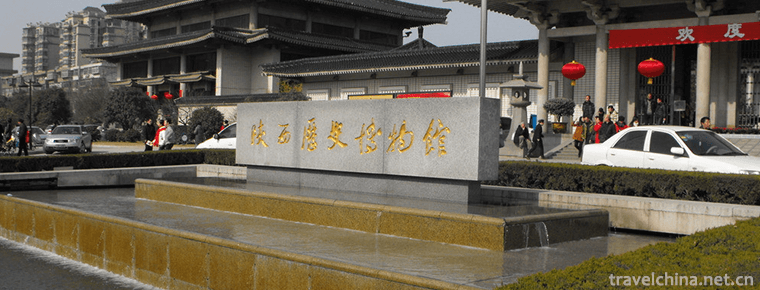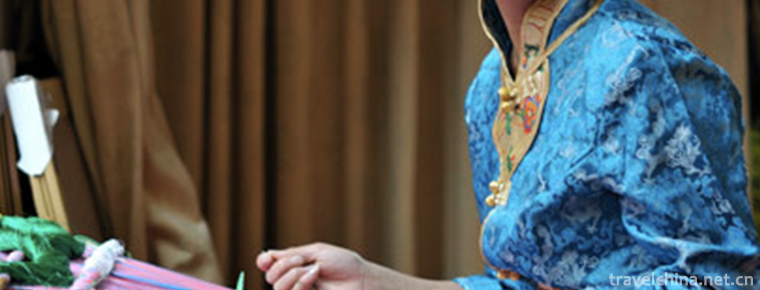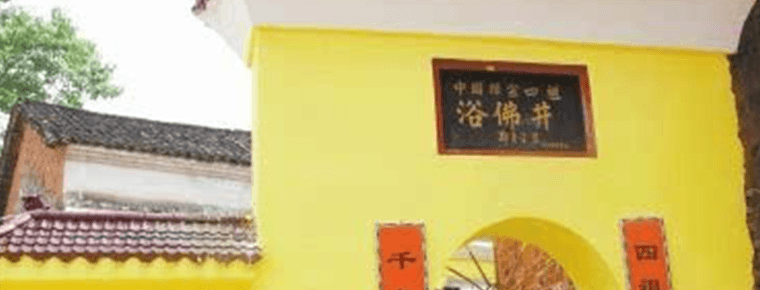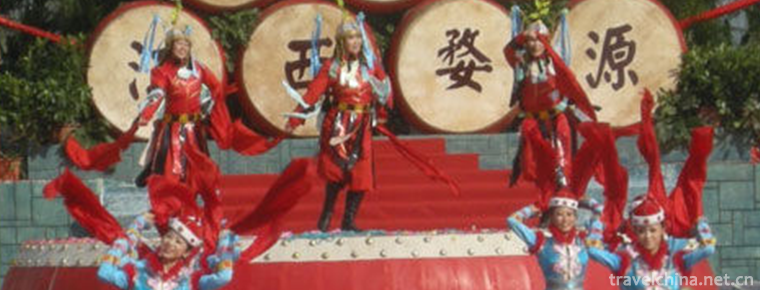Brick carving
Brick carving
Brick carving refers to the carving of landscape, flowers, figures and other patterns on green bricks. It is an important art form in ancient architectural carving. The production technology and core point is to carve the surface depth with the finished green bricks of the grade of bricks. This is the true brick carving in the traditional sense of our country for hundreds of years. The traditional brick carving is exquisite and delicate. It is vivid and full of book spirit.
brief introduction
Brick carving is a kind of carving which takes brick as carving object. It imitates stone carving, but it is more economical and labor-saving than stone carving, so it is also used more, especially in folk architecture. In residential buildings, brick carvings are mostly used in gates, gables, headings, wall lighting and other places. Their style of expression strives to be vivid and lively. In terms of sculpture techniques, it is also similar to wood and stone carvings, such as ground picking, hidden carving, relief, carving through, round carving, multi-layer carving, etc. Brick carvings have both the fortitude and texture of stone carvings and the delicacy, softness and smoothness of wood carvings, presenting the style of both rigidity and softness and plain and elegant.
Technological process
Brick making: China's brick carvings are mostly made of specially fired green bricks, which are made of very fine clay or sludge deposited at the bottom of the river. Sometimes special firing processes are used to ensure that the finished products are uniform in texture, moderate in softness and hardness, and free of stomata. For example, Huizhou brick carving uses only the best clay on the North Bank of Xin'an River. Bricks must also be polished before they can be used.
Proofing: The design draft is rubbed on the brick surface which has been smeared with lime water, or it is directly drawn on the brick to adjust the basic layout and proportion.
Blanking: roughly outline the picture with chisel or carving knife, and divide the basic level.
Detailed: Use a variety of tools, shovel, engraving, pick and other plans to combine to depict details.
artistic characteristics
Brick carvings usually retain the original color of bricks and do not dye them separately, but there are also a small number of painted brick carvings. Therefore, the carver needs to carve out many layers, using the shadows produced by the light to enhance the artistic effect. Ming and Qing Dynasties are the peak of brick carving development. Craftsmen can carve nine layers on square bricks with less than inch thickness. Because of the material relationship, the bricks other than green bricks carve less layers than green bricks.
Brick carving is mostly used as decoration of building components or doors, walls and walls. Because of the strict quality requirements in the selection, shaping and firing of green bricks, they are solid and delicate and suitable for carving. In art, brick carving can be seen far and near, with complete effect. In terms of themes, brick carvings are mainly composed of the characters of dragon and Phoenix Chengxiang, Hehe Erxian, Liu Hai opera Jinchan, Sanyang Kaitai, Guo Ziyi's longevity, Kirin delivery, Lion Rolling Hydrangea, Pine and cypress, orchid, bamboo, mountain tea, chrysanthemum, lotus, carp, Fulu Shouxi, etc., which imply good luck and are well-liked by people. In sculpture techniques, there are mainly Yin carving (outline carving, as in painting outline), shallow relief, deep relief, round carving, carving, relief carving (shadow line carving image outline, and in the image outline outside the ground chiseling leveling) and so on (see sculpture handicraft). From the practical and ornamental point of view, the folk brick carving has a concise image, rich style, and does not blindly pursue exquisiteness and delicacy, so as to maintain the firmness of the building components and withstand the sun and rain.
Historical Evolution
For example, the eight-character brick carvings on the East and west sides of Nanjing Mingxiaoling Palace City are embossed with large curly twigs and flowers, and the brick carvings of Sika deer, clouds and dragons on the Xumi pedestal on the site of Fengyang Ming Dynasty's Zhongdu City in Anhui Province. At the same time, the folk brick carvings in Anhui and Jiangsu have also developed. Built in Tongzhi (1862-1874) in Jinhua, Zhejiang Province, General Li Shixian of the Taiping Heavenly Kingdom carved dragons, phoenixes, cranes and other patterns on the brick wall of his vestibule, with a strong style. In addition to Jiangsu and Anhui, the folk brick carvings in the Qing Dynasty developed greatly in Shanxi, Zhejiang, Fujian, Guangdong, Beijing and Hebei. Most of them were decorations of halls, gates, photo walls, ancestral halls, theatres and gables of government officials, wealthy landlords'residences. Some of them were accompanied by gray clay sculptures or inlays. Embedded chinaware, fighting for victory, rich and gorgeous. In the late Qing Dynasty, brick carving tended to be elaborate and exquisite, with the artistic interest of painting, fully demonstrating the artistic talent of the ancient Han working people.
initial stage
Chinese brick carving products were developed from Eastern Zhou Dynasty tiles, Qin bricks, hollow bricks and Han Dynasty portrait bricks. Han Dynasty portrait brick is a large hollow brick of prefabricated components of the tomb. It is used to print various images on wet mud. Brick carvings were formed in the Northern Song Dynasty and became tomb walls.
Decoration of noodles. In the tombs of the Northern Song Dynasty excavated in Henan, Shanxi and Gansu provinces, the three walls are made of brick carvings. The quantity and quality of brick carvings in the tomb chamber and the selected themes all depend on the social status of the owner of the tomb chamber. Common themes include sitting between husband and wife of the owner of the tomb, tray of the servant, pot-holding of the maid, etc., which reproduces the life scene of the owner of the tomb in his lifetime. In the Jin Dynasty, the contents of brick carvings in tombs were more abundant, and their skills were also improved.
Metaphase
Built in 1210, Houma Dongjinjian Tomb, Shanxi Province, in less than 4.7 m2 of area, brick carvings covered the whole room, carved with imitation wooden structure of the arch, arches, algae wells, gates, fans, as well as screens, benches, flowers, birds, birds, figures, theatrical scenes and other patterns, which stood at the entrance of the stage, Shengdan. Actors such as Jing, Wei and Ugly used round carving techniques to create vivid images. They are representative works of brick carving in the Jin Dynasty. In Yuan Dynasty, brick carvings in tombs gradually declined. In the Ming Dynasty, brick carvings were developed from tomb brick carvings to architectural decorative brick carvings.
Peak
In the Qing Dynasty, the ventilation holes of the pillars on the inner walls of the Forbidden City palace in Beijing were also carved with brick and carved with flower and bird patterns.
And beautiful, and conducive to air circulation. The walls of Long En Hall and its matching Hall of Empress Dowager Cixi's mausoleum are also made of brick carvings, some of which are gold-pasted and brilliant.
Distribution Schools
The main schools of brick carving are : 1, Beijing brick carving; 2, Tianjin brick carving; 3, Shanxi brick carving; 4, Huizhou brick carving; 5, Su brick carving (Suzhou brick carving); 6, Guangdong brick carving; 7, Linxia brick carving (Hezhou brick carving); 8, Shaanxi brick carving 9, brick carving in other areas.
Brick carving in Beijing
Beijing brick carving has a long history, exquisite carving characteristics, and has a good decorative effect and strong people.
Ethnic style. It is widely used in architecture, usually in doors, corridors, walls, walls, windows and other places. Flowers are the main themes, while animals and characters are relatively few. The techniques include relief, penetration and line engraving. The style is simple, healthy and steady. The pattern is tight and full. Such as: playback less than the beginning, back lines, such as hollow carving.
Su brick carving
Su-style brick carving is one of the typical representatives of brick carving art in southern China. Ming Dynasty is more typical and simple. Qing Dynasty, especially after Kangxi and Qianlong, has greatly developed and improved. It has formed its own fine and elegant decorative style, and is known as the "Southern Show". It is worth mentioning that most of the brick inscriptions in Suzhou are inscribed by celebrities. The exquisite calligraphy and elegant brick carvings often complement each other, which makes the brick carvings in Suzhou more bookish. Suzhou used to have more than 200 brick doors in Ming and Qing Dynasties. Unfortunately, most of them were annihilated. With the return of modern people's aesthetic interest to the ancient art, the brick carving of the doorway is very important.
It is also loved by people. Many modern buildings and residential houses are also decorated with doors and brick carvings.
Tianjin brick carving
The contents of brick carvings in Tianjin can be divided into ten categories: auspicious patterns, pavilions, pavilions, myths, folklores, secular life, flowers, birds, animals, Bogu, baby drama, classical novels, words and patterns. The subject matter of brick carving varies according to the location. For example, on the portal and the wall, there are many moments of "Samsung Gaozhao" and "Wei Qian's making a fortune". The roof ridge is often used "flat out three levels" and other patterns.
Tianjin brick carving in ancient Tianjin architecture is rich in themes and exquisite in carving. It is represented by temples, government buildings, guildhalls and residential buildings in Jixian and Tianjin urban areas, which have strong local characteristics. The early brick carvings in Tianjin were first carved on bricks, then fired into kilns, and then slightly processed, which could be used for decoration of the veneer of buildings. Three ancient pagodas in Liao Dynasty, such as Jixian Baita, adopt this kind of decoration technology. Because of the complex process and low yield of finished products, it gradually changed from kiln to carving on finished bricks. At the beginning of Qing Dynasty, Tianjin was transformed from a state of Wei to a prefecture of Shengfu, and the local economy developed rapidly. Some salt merchants, grain merchants and shippers with prominent household wealth have flourished gardens and built villas. During the Jiaqing and Daoguang years, the "Eight Great Masters" of Tianjin built luxurious houses one after another, but because of the restrictions of the Qing Dynasty on the grade and specifications of residential buildings at that time, they could not be as brilliant as the red walls and green tiles of the imperial palaces and royal palaces in Beijing, and they were unwilling to learn the elegance of literati gardens in the south of the Yangtze River. In order to activate the atmosphere of the building and show their wealth, most of them adopt exquisite brick carving to decorate their houses, which promotes the development of brick carving industry in Tianjin.
Tianjin brick carving is famous for its complete, beautiful and magnificent artistic style. Many difficult carving techniques such as relief, penetration and shallow carving are often used in a brick carving work. Among the ancient buildings in Tianjin, the existing brick carvings are well preserved in the mosque, Guangdong Guild Hall, the city and Yangliuqing folk houses. Among them, the brick carving of Yangliuqing folk house is praised as very characteristic, such as: octagonal protruding carving - the Eight Diagrams pattern is only seen in Tianjin brick carving.
Brick Carving - Shanxi Brick Carving Shanxi Brick Carving Shanxi Brick Carving features: first, the soil is excellent, durable; second, a variety of patterns, a great routine; third, fine painting, unique knife work; fourth, the genealogy is correct, orderly inheritance.
Since the Sui, Tang, Song and Yuan Dynasties, carving traces can be seen in many temples and bricks in Shanxi. Especially in the late Ming and early Qing dynasties, with the rise of Shanxi businessmen, the construction of altars, temples and monasteries by villages and communities in the territory became popular, and the "one-seal" type of "quadrangles" sprang up everywhere, and the streets built with bricks and tiles reappeared. The market demand of brick carving crafts such as ridge collar, shadow wall and flower wall gate building is very large. This objectively promoted the development of brick carving skills in Shanxi. Folk tradition, to the middle and late Qing Dynasty. On average, there is a small brick kiln in four villages in the territory, and each brick kiln can burn out "flower goods" (that is, brick carvings). At that time, there were many kinds of brick carvings in Yaowangbao, Xiaowangcun, Dachangcun and Dongmuzhuang, with abundant production and a long market.
Tianjin brick carving was flourishing after Xianfeng in Qing Dynasty. There are fine brick carvings on the wall, the exterior of wooden doors and windows, and the lintel of the house. In order to decorate the large plane of the gables and the back eaves, sometimes they are decorated with brick sculptures, which are extremely beautiful. In terms of technology, Ma Shunqing and Ma Shaoqing in Tianjin invented the method of sticking bricks to increase the thickness of bricks and enhance the depth of field and depth of cut after carving. Tianjin brick carvings have distinctive features. In addition to traditional auspicious patterns, there are also some local scenery, such as city buildings, drum towers, bridges and pavilions.
Guangdong Brick Carving
Guangdong brick carving is composed of shallow relief, high relief and through carving according to techniques, and brick carving is grouped according to scale (first single injection, then combined into a complete pattern) and single brick carving. Combination brick carving is generally used for wall, pillar, wall lighting and other large areas of decoration, the large need for hundreds of brick carving composition. Monolithic brick carvings are often inlaid in the margins of shrines, or decorations, seats and other places. Guangdong chooses the top grade green brick carving according to the pattern needs to be carved piece by piece, and then splices according to the parts, mosaic on the wall. Guangdong brick carving is a part of architecture and also an interior and exterior decoration. Brick sculptures can be seen everywhere in the dwellings of the Pearl River Valley in Guangdong Province. They exist independently on the walls of the gables, the walls on both sides of the gates, the gates, the eaves and so on, or are decorated with paintings, gray sculptures and pottery sculptures. The techniques include high and low relief, penetration and line engraving. The contents include flowers, characters and animals.
Compared with the extensive and thick brick carving in the north, Guangdong brick carving shows the characteristics of delicate and graceful. Using refined water-milled green brick as material, it is often carved as fine as silk. It is customarily called "hanging line brick carving". The sculpture technique mostly carries on by the shallow relief, the high relief, the penetration carving, the fine person may attain seven or eight layers, creates the scene far-reaching effect, the carved flower branch and leaf is luxuriant, the shape is like the rich brocade. The armour of opera characters is clear. Under the sunlight of different times, it can also show different colors such as black, white and grey. The highlights are more smoky and glorious, and the pictures are full of fluctuations and changes.
Huizhou brick carving
Brick carvings in Huizhou (now Shexian County, Anhui Province) are mainly used on doorways, door masks, eaves and pillar foundations. Ancient brick carvings were mostly relief carvings, and a few also had line carvings. Huizhou buildings mostly use green-grey roofs and roofs, snow-white powder walls, water-milled green brick doors, doors and eaves, doors and feet (up to one or two feet of the ground) are all made of bluestone or marble, and some people also use water-milled bluebrick to lay flat, and then fixed on the surface of wooden door panels with round head rivets. Such a whole building, brick carving embedded in it, very harmonious. The patterns of Huizhou brick carvings include flowers and birds, figures, plays, life scenes and auspicious decorations. Fine craftsmanship, neat sculpture, smooth transportation, prominent theme, clear hierarchy. Anhui Museum contains Guo Ziyi Shangshou and Baizitu, which are the representative works of Huizhou brick carving and show superb skills. Huizhou brick carving originated in the Song Dynasty and flourished in the Ming and Qing Dynasties. Ming Dynasty sculpture is rough, simple, generally only flat and shallow relief, with the help of line modelling, but lack of perspective change, but emphasize symmetry, rich in decorative interest. Qing Dynasty sculpture is exquisite and complex. The composition and layout absorb the expression of Xin'an Painting School. It pays attention to artistic beauty. It uses deep relief and round sculpture to promote hollow-out effect. Some of the hollow-out layers are as many as ten stories, pavilions and terraces, trees, mountains and rivers, characters, animals, flowers, birds, insects and fish in the same picture.
Linxia Brick Carving
Hezhou brick carving (Linxia brick carving) is a traditional folk art in Linxia, Gansu Province, which originated in the Northern Song Dynasty and matured in the Ming and Qing Dynasties. It also absorbs the artistic features of painting and woodcarving to make this folk art closely integrated with architecture more perfect and exquisite. Linxia brick carving process is divided into "kneading" and "carving" two kinds. "Kneading" is made of clay mud processed and prepared, and patterns of dragon, phoenix, lion and various flowers, birds and insects are made by hand moulds, and then baked.
Linxia brick carving is a traditional architectural decoration carving in Linxia County. Brick carving ornaments unearthed from the tomb of Wang Ji, a Jin school lieutenant in Jinyi in the fifteen years of Dading in Linxia, Gansu Province, are made of earth kiln green bricks. It can be judged that Linxia brick carving originated from Qin and Han Dynasties and was an extension of the folk woodcarving skills at that time.
According to archaeological excavations, Linxia brick carving art was quite mature in the Song Dynasty. By the Yuan and Ming Dynasties, brick carving technology had been widely used in various buildings. The Ming and Qing dynasties are the flourishing period of Linxia brick carving. The wall of Dragon and Phoenix Chengxiang, built in front of the gate of Bafang Mosque in the late Ming and early Qing dynasties, can be regarded as the exquisite brick carving in Hezhou. In modern times, Linxia brick carving has absorbed the advantages of painting and woodcut and gained greater development. It is widely used in temples, gardens and residential buildings. The decorative parts are shadow walls, barriers, gates, coupon doors, ridges, walls, ridges and mountain flowers. Brick carvings have a wide range of styles, mostly with good wishes as the content, including pines, cypress, plum orchid, bamboo chrysanthemum, wonderful grass and gorgeous flowers; there are pine cranes, magpies, birds, squirrels, cypress deer; more are imitation wooden dogfight arch, sparrow substitution, purlin rafters, curly grass, pattern and so on. The forms of expression are rich and varied, some are magnificent, some are elegant and generous, and the paintings are meaningful.
The finished brick carvings are mainly used to decorate the deep houses and courtyards in temples, temples, temples, temples, nunneries and dwellings. They are generally used in patios, gables, shadow walls, corridors, Danxue, steps, lower sills, dukes, beards, roofs, etc. The carvings can be divided into natural scenery, social life and decorative patterns with national characteristics. In the process of development, Linxia brick carving absorbed wood carving, stone carving, jade carving and other carving techniques, while paying attention to the integration of traditional Chinese painting, calligraphy, seals, poetry and brick carving techniques to form a pluralistic artistic feature, which not only retains the simplicity and simplicity of the unique materials, but also presents itself. It has diversified artistic features.
Linxia brick carving can be divided into kneading and carving in terms of production technology. The so-called kneading, first is carefully blended, prepared clay mud, hand and mold kneading into various shapes, and then roasted into the kiln. Most of these works are independently shaped, such as dragons, phoenixes, unicorns, etc. They are mostly used on roofs, commonly known as "ridges". The so-called carving is to carve various patterns on selected fired green bricks with a carving knife. Its process is much more complicated than kneading. A pattern is often stitched together by more than a dozen or even dozens of green bricks, carved on clay kiln sponge bricks with a knife, and used in building wall decoration, steps and so on. The carving process includes eight procedures, such as grinding, composition, carving, fine grinding, over-water, numbering, splicing and installation, decoration, etc. The tools for making are folding rulers, saws, planers, shovels, chips, cutting knives and so on. The shovels, chips and cutting knives are divided into several kinds according to the process requirements, such as weight, size, length, width and thickness of the edge.
Linxia brick carving adopts the technique of combining carving and hollowing, or round carving or semi-round carving, to make it jump out of the picture, with distinct layers and strong three-dimensional sense. Secondary parts and backgrounds are treated by relief. In terms of conception, we should combine realism with Romanticism, place our emotions on the scenery and blend the scenery. Its engraving techniques mainly include Yin line engraving, concave line engraving, convex line engraving, shallow relief, high relief, hollow through engraving and so on. This is the essence of the art of brick carving in Linxia. A brick carving often consists of three or four layers of patterns, which are overlapped and folded, and breathe in and out. Linxia Brick Carving was approved by the State Council of China on May 20, 2006 and listed in the first batch of intangible cultural heritage list of China at the national level.
Qingxu Brick Carving
Qingxu brick carving has a long history, carrying different cultural inheritance of different times, but also left different brand of the times. A large number of grey pottery, black pottery and colored pottery have been unearthed in Dugou Neolithic Site and Mayugu Cultural Site in the territory of Qingxu. Experts identified that these pottery belonged to Yangshao culture, indicating that the ancestors of Qing and Xu had mastered the skill of making pottery and firing bricks as early as before Xia and Shang Dynasties.
The extensive use of brick carvings in residential buildings is closely related to the rise of Shanxi merchants. After the prosperity of economy, Shanxi businessmen competed to show their wealth, and paid attention to building scale and carving decoration, which made brick carvings originally used only in palaces, temples and other buildings enter the dwellings. Brick carving adornment mostly uses popular forms to convey auspicious implicature by means of metonymy, metaphor, analogy, homophonic and other means, to express people's concern for the value of life, the hope of family prosperity, the yearning for a prosperous and happy life, and the pursuit of their social status. Folk craftsmen endow this kind of wishes with rich cultural connotations and profound implications with rich imagination, draw patterns, and then make them according to patterns and process.
As an important decorative art of residential buildings, brick carvings, which are made of exquisite skills, profound cultural connotation and unique artistic techniques, are fresh, simple and ingenious. Brick carving plays a role in the whole building. It not only highlights the identity and interests of the head of the household, but also carries different cultural inheritance of different times, leaving a deep imprint of the times. The market demand for brick carvings such as ridge collar, shadow wall and flower wall gate building is still very large.
Brick carving (Shanxi folk house brick carving) approved by the State Council of China on June 7, 2008 to be included in the second batch of China's national intangible cultural heritage list: heritage number_-38
Brick carving, also known as "brick carving" and "brick painting", is a folk carving art of carving objects or patterns on special earthen bricks with fine texture. It is mainly used for wall decoration of temples, tombs, houses and other buildings. Jiaxing brick carving can be divided into Jiashan Xitang brick carving and Tongxiang Gaoqiao brick carving.
The streets of Xitang Town are built along Quyi River. The residential buildings are built near the water. The old town with a square kilometer preserves 250,000 square meters of original Ming and Qing buildings. It is a thousand-year-old town with a strong water-village flavor and inhabits more than 2,000 aborigines. Xitang brick carving flourished in the Ming and Qing Dynasties and has been handed down to the present day.
The material for making brick carvings is water-milled green brick. It is better to choose the fine and sandless bricks fired from the cross-pond mud. This kind of brick has high density, basically no void, and can be handy in making. To make a good brick carving, it has a lot to do with bricks. Manufacturing process: First determine the pattern, and then cut the bricks according to the size of the pattern. Generally, the small pattern is a block-by-block pattern, while some large patterns need several pieces to be stitched together. After the blue brick is selected, the pattern is copied onto the green brick, and then the steel needle is used to draw the thread. Because the copied patterns are easily erased, and the other patterns need to be copied together by piecing together the cut green bricks. The blanking begins after the drawing is completed. This process needs experienced masters to operate, because we need to make near and far height on the brick surface according to the needs of the screen.
Different stereo sense, and to have some of the lines that have been hit out again. Then blanking, until the whole outline of the pattern is finalized. Traditional blanking tools are slowly beaten out with small hammers and steel knives with high hardness. Generally, they are operated by electric tools (cutting machines, grinding heads). When the billet is finished, fine carving is needed. This tool needs careful workers to operate. The facial expression, the texture of the trunk, the meridians of the leaves and the tiles of the house should be delicately depicted until satisfactory. This process must be completed with a very sharp self-made steel knife. After the completion of all the grinding, repair.
Brick carving is generally divided into two categories: pre-kiln carving and post-kiln carving. Pre-kiln carving is to carve Adobe into fired bricks, while post-kiln carving is to carve on finished bricks. The brick carvings in Tongxiang City are usually carved after the kiln. After the kiln, carving is very difficult, carving knives and chisel marks are heavy, carving method is more difficult than jade carving and stone carving, especially green carving. Therefore, we must immerse the brick in water to turn green into mature.
Brick carving has been listed in the third batch of intangible cultural heritage list of Jiaxing City.


-
Cattle back MountainNiubeishan Mountain
Niubei Mountain is located in the border of Xingjing County and Luding County in Ya'an City.
Views: 171 Time 2018-10-13 -
Aerhchin Mountains
Altyn Tagh is a mountain range in southeastern the Xinjiang Uygur Autonomous Region, China. The eastern end extends to the two provinces of Qinghai and Gansu.
Views: 253 Time 2018-11-01 -
Huizhou stinky tofu
The common name of stinky tofu in Huizhou is "Big Dumb and stinky", which is a characteristic traditional snack in Huizhou, Anhui Province..
Views: 188 Time 2018-11-27 -
Tourist Area of Wu Taihu Lake in Suzhou
Wuzhong Taihu Lake Tourist Area in Suzhou is located in the southwest corner of the paradise of Taihu Lake, covering an area of 21.5 square kilometers..
Views: 220 Time 2018-12-06 -
Jiulian mountain
Jiulianshan Scenic Spot is located in Songshuping Village, Shangbali Town, Huixian City, Xinxiang City, Henan Province. It belongs to the south foot of Taihang Mountain.
Views: 177 Time 2018-12-22 -
Shaanxi History Museum
Shaanxi History Museum, China's first large-scale modern national museum, the first batch of China's "AAAA" class tourist attractions, known as the "ancient capital pearl,.
Views: 141 Time 2019-02-08 -
Tibetan knitting and embroidery
Tibetans are good at embroidery and textile, and exquisite craftsmanship adds infinite charm to their costumes, which is the most prominent manifestation of Tibetan.
Views: 135 Time 2019-04-05 -
Legend of Zen ancestors
Huangmei is the birthplace of Chinese Zen culture. There are six ancestral courts of Zen in China, two of which are exclusive in this county. The four ancestors temple and the five ancestors temple in.
Views: 135 Time 2019-04-15 -
Korean Traditional Wedding
The traditional wedding ceremony of the Korean nationality in China is formed by the continuous integration and development of the Korean ancestors with the Han nationality and other minority.
Views: 162 Time 2019-04-16 -
Drum Dance
Dance and drum dance is a kind of folk dance of Miao nationality in China. Miao people's "encouragement" has a long history. The written records of Miao people's drumming.
Views: 130 Time 2019-05-01 -
Hui Nationality Medicine
Hui medicine is the product of the combination of Chinese traditional medicine and Arab-Islamic medicine. Arabs began to develop science and culture when other European countries had not yet separated.
Views: 314 Time 2019-05-04 -
Administrative division of Guangyuan
Guangyuan City has 7 county-level administrative divisions (Municipal District 3, county 4) and 142 township level administrative divisions (Street 7, town 111, township 24). It covers an area of 16310 square kilometers and has a population of 3.11 million. Guangyuan Municipal People's government is located at No.24, north section of Renmin Road, Lizhou district..
Views: 100 Time 2020-12-15


